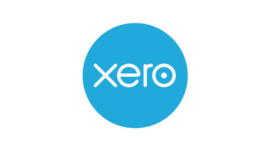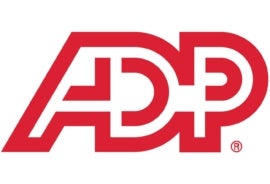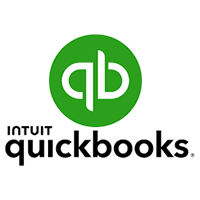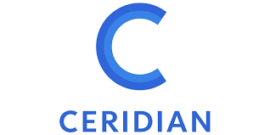Paying your employees on time and staying compliant with employment laws is vital. Luckily for business owners around the world, these processes can be automated through payroll software.
Depending on your industry and your organisation’s size, the best payroll software for your business is likely either Xero Payroll or Rippling. Below, we’ll review these and other top payroll companies in Australia to help you find your ideal solution.
Jump to:
Featured partners
Best payroll software in Australia: Feature comparison table
*Price includes GST.
Plan details up to date as of 11/14/2023.
Xero Payroll: Best overall Australian payroll software

Xero Payroll is a highly rated payroll solution for small to medium-sized businesses in Australia. It integrates with Xero Accounting, which is one of the most popular bookkeeping solutions on the market.
With Xero Payroll, you can automate payroll calculations, make payments and report payroll details to the Australian Taxation Office in compliance with the STP initiative. The software is also SuperStream compliant, meaning it will automatically and electronically send your employees’ super contributions to their Australian super fund of choice.
Pricing
Xero’s standalone payroll plans start at $15 AUD per month (includes GST). At that price, you can pay one to four employees.
If you want bundled accounting-and-payroll plans, Xero Accounting plans start at the following prices (includes GST):
- Xero Starter: $32 AUD/month. Base price includes payroll for one individual.
- Xero Standard: $65 AUD/month. Base price includes payroll for up to two individuals.
- Xero Premium: $85 AUD/month. Base price includes payroll for up to five individuals.
- Xero Ultimate: $110 AUD/month. Base price includes payroll for up to 10 individuals.
Users of Xero’s Premium and Ultimate plans can choose to pay more than the baseline amount of employees included in the plan in increments of 10, 20, 50 or 100 additional workers. For every employee after your 100th, you’ll pay another $2 AUD/month.
Note that Xero supports payroll for up to 200 workers. If you want to pay more people than that, you’ll need to level up to a heftier enterprise-level solution like ADP Australia.
Top payroll features
- In-depth payroll reporting and analytics.
- Employee self-service via the Xero Me mobile payroll app.
- Built-in timesheets.
- SuperStream-compliant, ATO-certified automated superannuation (auto super).
- Automatic leave balance adjustments for all standard Australian leave types.
Pros
- Complete payroll feature set.
- Deep integration with Xero Accounting.
- Impressive mobile app.
- Transparent pricing.
- Highly scalable with four plans.
Cons
- Steep learning curve, especially for advanced tools.
- No phone support.
Rippling: Best HR + payroll plans

Integrating your human resource and payroll software can be a challenge, especially if you purchase software from different vendors that don’t integrate with each other. Rippling neatly sidesteps this problem by offering you a holistic, all-in-one HRIS option.
While you can use Rippling payroll as a standalone service, Rippling really excels when you create a custom package with your preferred Rippling payroll, tech, finance and HR modules. The software is also remarkably user-friendly and scalable, growing with you as your business expands from a small two-person operation to a multinational business with hundreds of workers.
Pricing
Rippling doesn’t list its prices upfront, though it does charge an unspecified monthly base fee along with a monthly per-payee fee. Contact the company directly to request a free software demo and custom quote.
Top payroll features
- Automatic journal entry creation and general ledger syncing.
- Integration with 500+ apps, including NetSuite accounting software integration.
- Supports APRA funds and SMSF superannuation plans.
- Customisable admin permissions (can be set by department, role, level and more).
- Federal leave compliance plus customisable-by-state leave compliance management.
- Built-in time tracking.
Pros
- Payroll takes just two to five minutes to run.
- Excellent built-in integrations with more than 500 business apps.
- Fully automated payroll.
- Extremely scalable modular solution.
- No need to find separate, potentially incompatible HR and payroll solutions.
Cons
- Not SuperStream compliant.
- No transparent pricing on site (custom quote required).
- Per-module per-person fee may be too expensive for some small businesses.
ADP Australia: Best for third-party app integrations

ADP payroll is one of the most widely recognized payroll solutions in the world, with coverage in over 140 countries. Its award-winning solution has built-in compliance rules for the Australian market. ADP payroll offers a full range of features, including employee self-service, automated online payroll processing and integration with several third-party applications, including ERPs and time-tracking applications.
Pricing
ADP doesn’t disclose its payroll plan pricing online. You must contact ADP’s sales team for a customised quote.
Top payroll features
- Analytics tools that provide insights for data-driven decisions.
- Regularly updated compliance rules to keep up with changing laws and regulations.
- Integration with over 700 financial institutions and insurance companies.
- SuperStream certified.
Pros
- Payroll plan tailored to specific needs of the customer.
- High level of customisation.
- Access to complete human resources suite.
Cons
- Pricing isn’t transparent.
Scaling up or down is cumbersome as doing so requires a customised setup.
QuickBooks Payroll Software: Best automations

QuickBooks’ extremely user-friendly software is fully automated to make running payroll in Australia as simple as possible. Employers benefit from QuickBooks Payroll’s low-cost payroll plans and comprehensive, automated compliance updates. Meanwhile, employees benefit from access to the WorkZone app, which they can use to request leave, submit timesheets, track reimbursable expenses and see their pay slips.
QuickBooks Payroll’s basic plan is fairly fully featured in terms of payroll and compliance. The service also has an advanced plan with features like pre-built Awards, access to roster templates and shift-swapping reports and location- or shift-specific budgeting.
Note: QuickBooks Payroll Software is powered by Employment Hero.
Pricing
QuickBooks Payroll Software has two plans:
- Standard Payroll: $5 AUD per employee per month.
- Advanced Payroll: $10 AUD per month + $5 AUD per employee per month.
Both prices are GST inclusive. While both plans include all automated payroll features, only the Advanced plan includes rostering and time tracking.
Top payroll features
- Employee self-service.
- Comprehensive payroll reports, including budget reports (Advanced feature).
- Free onboarding and guided setup session.
- Streamlined contributions through Beam (a super fund clearing house).
- Customisable payroll templates.
Pros
- Excellent payroll automation.
- Proactive compliance alerts.
- Plans for simple and complex payroll needs.
- User-friendly mobile payroll app for employees.
Cons
- User complaints about Intuit QuickBooks customer service.
- Per-employee, per-pay run fees may make software too pricey for some small businesses.
Dayforce: Best for reporting and analytics

Dayforce is human capital management software built to help businesses streamline payroll and HR functions. The payroll tools offer real-time calculations as they are based on a single pay and time engine. This helps minimise the risk of failed data imports or delays in payroll processing. The solution is fully integrated with the ATO to help reduce administrative burden.
Pricing
Dayforce doesn’t disclose pricing for its payroll plans online. Contact the sales team for a custom quote.
Top payroll features
- Variety of custom payroll reports including tax documentation, compliance risk assessment, general ledger reporting and error reporting.
- Employee self-service to allow users to access tax documents and update their personal information.
- Real-time audits to help HR proactively address errors.
Pros
- Plenty of in-app learning content.
- Impressive employee self-service tools.
- Excellent reporting features.
- Straightforward user interface.
Cons
- Data load time can be a bit slow.
- Implementation is time-consuming.
- Not SuperStream certified.
Employment Innovations: Best outsourced payroll solution

If you don’t have the time or resources to run payroll in house, an outsourced payroll company like Employment Innovations is one possible solution. The company offers an end-to-end payroll service, which means Employment Innovations tackles tasks like paying your employees on time, maintaining compliance with employment laws, submitting the correct reports to the ATO and following all STP processes.
Employment Innovations also tackles award interpretation, which means establishing your employees’ award classification per standards set by Fair Work Australia. If you want outsourced HR along with your outsourced payroll, Employment Innovations offers several HR plans to support small and midsize businesses across the country.
Pricing
Employment Innovations requires interested parties to request a custom quote.
Top payroll features
- Leave management tools, including access to the employee portal and online timesheets.
- Extensive reporting tools.
- Integration with several types of applications, including rostering systems and accounting software.
Pros
- End-to-end payroll processing.
- Dedicated local payroll experts across different Australian cities, including Perth, Melbourne, Sydney and Brisbane.
- Impressive automation tools, such as the ability to set payroll conditions.
Cons
- Pricing isn’t transparent.
- Some users report confusing or surprising fees for add-on services.
- Not SuperStream compliant.
ELMO: Best all-in-one employee management solution

ELMO is a top cloud-based payroll, HR and employee management solution for Australian businesses. Like Rippling, ELMO offers more than just payroll: As a more thorough HRIS solution, ELMO offers a full suite of payroll and HR tools along with optional learning management, performance management, onboarding and recruiting features.
Pricing
ELMO’s human capital management solution requires prospective customers to request a free quote.
Top payroll features
- Customised reports, including payroll tax reporting, audit and compliance.
- Employee and manager self-service tools to request time off, view payment summaries and have paperless timesheets.
- Enhanced compliance with STP Phase 2 and SuperStream compliance.
- Full range of rostering, time tracking and attendance tools.
Pros
- Single dashboard for payroll and other HR features.
- Highly customisable.
- Clean and intuitive layout.
Cons
- Lack of in-app learning content or training material.
- Slow load times, especially with the reporting feature.
CloudPayroll: Best plan for microbusinesses

CloudPayroll is a cloud-based payroll software geared towards small businesses in Australia. While the payroll service does have plans geared toward small, midsize and big businesses, its MICRO plan for the smallest of small businesses sets CloudPay apart.
Whether you go with CloudPayroll’s MICRO plan or one of its more fully featured plans for bigger businesses, you can sync the software with popular third-party apps like Xero Accounting and Timesheets. Thanks to CloudPayroll’s multiple plans and expansive integrations, it’s easy for small businesses to scale up with the software as they grow.
Pricing
CloudPay’s microbusiness plan, MICRO, starts at $10 AUD per month (including GST) for up to four payees.
The service’s small-business plans are charged by the number of employees you pay and the frequency of your payruns. (For instance, paying one employee once a week costs $9.95 per pay run, GST and bank fees not included.) Other plans require a custom quote, including CloudPay’s outsourced payroll plan and its premium plan for midsize businesses.
For a cheaper option, you can sign up for the premium plan but take over management of your own superannuation payments. Interested customers should get in touch for a custom quote.
Top payroll features
- Extensive reporting tools, including payroll variation, tax report and audit trail.
- Open API available for customised integration with third-party applications.
- Employee Kiosk feature for quick access to payroll information via web or mobile.
- Management of superannuation payments.
- Micro plan especially designed for up to four employees.
Pros
- Easy to use.
- Open API.
- Comprehensive training.
- Scalable plans.
Cons
- Users have reported some bugs, such as login issues.
- Confusing pricing structure for non-micro plans.
Our methodology
This review only includes payroll software that the Australian Taxation Office (ATO) lists on its register of payroll software products.
These products are not necessarily endorsed by the ATO, but their inclusion on the register means they meet basic security standards as established by the Digital Service Provider (DSP) Operational Security Framework (OSF). As a result, these software companies are authorised to send payroll and tax data straight to the ATO on your behalf using a Super Gateway or Sending Service Provider.
Along with conforming to DSP Operational Framework standards, all of the payroll software on our list meet the following requirements:
- They have a Cloud software ID (used to authorise the software with the ATO).
- They follow ATO requirements for the Single Touch Payroll (STP) initiative, including STP Phase 2.
Most, but not all, of the products we reviewed are also SuperStream Certified by the ATO.
Read our payroll methodology page to learn more about our research methods and review standards.
How to choose the best payroll software for your Australian business
To find the best payroll service for your Australian organisation, we recommend signing up for a free trial with a provider like Xero. If the payroll provider you’re most interested in doesn’t offer a free trial, they likely offer a free demo, so visit their site for a walkthrough or call to schedule a custom demo.
We also recommend looking through the ATO’s payroll software product register as well as the SuperStream Certified product register. You should never trust a payroll software company that isn’t verified by the ATO or that doesn’t stay up to date with the most recent phases of the STP initiative.
Finally, remember that each payroll software option has its own unique pros and cons. This list of top payroll software in Australia can give you a good start, but don’t make a final decision about which software is right for you until you’ve experienced a detailed demo or software trial.
Frequently asked questions
Which payroll software is best in Australia?
Xero is one of the best payroll software options for Australian businesses. Its fully automated payroll service integrates with Xero’s fantastic accounting solution as well as with more third-party business apps than nearly any other payroll provider.
However, while Xero might be the right payroll software choice for some Australian businesses, it might not be right for yours. Other options include CloudPay, Rippling, ADP Australia and more.
Which software is used for payroll in Australia?
Xero and ADP Australia are two of the most popular payroll companies in Australia, but there are hundreds of other software options on the market. As long as your payroll service is recognised by the ATO, you can use it to run payroll in Australia.
How do I run payroll in Australia?
To run payroll in Australia, start by finding the right payroll solution for your business. Some small businesses can keep costs low by choosing affordable payroll that automates and simplifies in-house payroll. Other businesses might prefer to turn their payroll tasks over to an outsourced payroll company.
Whichever payroll service you choose, it should walk you through the steps you should take to run payroll in Australia, which include the following:
- Registering your business for Pay As You Go (PAYG) withholding.
- Collecting your employees’ tax file numbers (TFNs), Superannuation information and bank details for direct deposit.
- Paying your employees while withholding the correct amount from each pay cheque.
- Sending PAYG withholding amounts and PAYG reports to the ATO (Australian Tax Office) every time you process payroll in compliance with the STP initiative.
Source of Article



